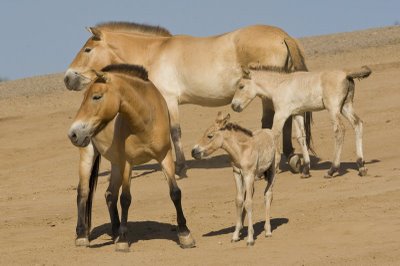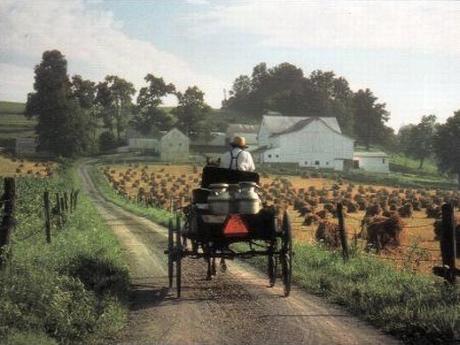
A Sensational Discovery
Przewalski’s ( PREZ- val- ski’s) Horse has been known to the world of science since 1881, when it was described by I. S. Poliakov, based on a skull and hide imported from Central Asia by Colonel Nicolai M. Przhevalsky in 1879. Poliakov named the newly discovered species ‘Przewalski’s Horse’ in honor of the explorer. However, the wild horses were known to local inhabitants a long time before that. The Mongols called them takhi, the Chinese jie-ma. The expression kertag is also used, originating from the Kirghiz kher takhi.
Characteristic Features
The Przewalski‘s Horse is a smallish, stocky animal with a powerful, low-set head. The coat is sandy brown to yellowish in color, with a white belly and a short, dark brown, erect mane and brown tail. There is a dark, dorsal stripe running along the middle of the back. The coat is also dark above the hooves. Some horses have dark legs up to their knees and there can also be dark stripes on the legs. The muzzle is often white (the so-called flour nose), although dark nosed individuals have also been recorded. The winter coat is long and thick and it protects the horse from the cold conditions and icy winds of its native habitat.
In contrast to domesticated horses, where the hair grows out of the root of the tail in long continuous strands, the root of the wild horse’s tail is covered in shorter hairs. Continue reading The Last Wild Horse
Month: January 2012
Samson’s sweet riddle
One of Britain’s iconic foodstuffs is Lyle’s Golden Syrup. Everyone knows the century-old design: a round tin can with a lid you prise off with a knife; racing green bodywork with the golden words arching over a central picture of a dried dead lion, and emanating from its stomach is a swarm of bees. A strange image for a foodstuff?
Living with the Amish
A 2011 UK Channel Four Series
www.channel4.com/programmes/living-with-the-amish/
Living with the Amish follows six British teenagers leaving their mobile phones, Facebook accounts and partying behind, as they head to Ohio and Pennsylvania to see what they can learn from six weeks of hard work and simple living. No Amish (pronounced ‘Aah-Mish’) community has opened up in this way before, and the Amish families taking part in the series hope that it will reveal the advantages of a pure, uncluttered way of life.
Charlotte, 18, loves clothes and shopping, and never leaves the house without her make-up on. But Charlotte thinks there’s more to life than what you wear and wants to see if the Amish experience will help her gain confidence and independence..

